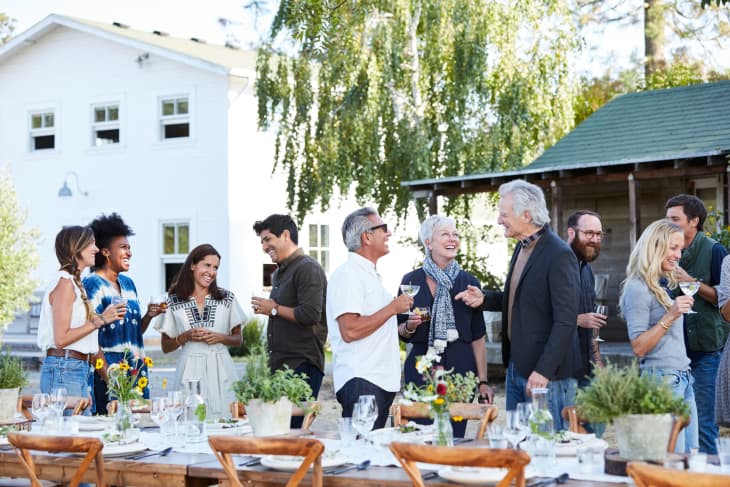So You’re Going to an Easter Mass or Passover Seder and Have No Clue What You’re Doing…

Being invited to participate in any family’s tradition—religious or not—is an honor, and one that should be treated with a ton of gratitude and respect. But what should you be doing? With spring holidays just around the corner, here are some things to keep in mind if you’re going to your first Easter Mass or Passover Seder.
What should I expect?
Without getting too far into the details of either celebration, a brief overview of each event’s background is helpful so you know, in general, what’s going on.
Easter Sunday is a Christian celebration of the resurrection of Jesus and though churches vary in the specific ways they observe the holiday, it is meant to be a time of celebration and renewal, much like spring itself. Expect to see lots of flowers during the service and to enjoy an upbeat, festive mood. Make sure to find out ahead of time, so you’re well-prepared, if the service will be a sunrise service. Traditionally, the service is followed by a family feast that will likely include an Easter egg hunt, especially if there are children.
A Passover Seder commemorates the Jews’ mass exodus from Egypt, where they had been held in slavery. A seder is a special dinner that includes reading from Scripture, drinking wine, singing, and partaking of highly symbolic foods. The ceremonial eating of these foods, which occurs in a very particular order, follows the trajectory of the readings, which recall the bitterness of captivity through the the joy of freedom. The mood is low-key and festive.
What should I wear?
Don’t hesitate to ask the person who invited you what they typically wear. Also remember that it’s always better (and far less embarrassing) to be over-dressed than under-dressed. Keep in mind that Easter Sunday is quite often a time that implicitly involves participants wearing not only their “Sunday best” but carefully planned spring-themed Easter outfits. A Seder, which typically occurs in people’s homes, is usually less formal.
What should I bring?
A host/hostess gift is always a good idea, particularly when you’re joining a special event. For an Easter feast, consider bringing Easter candy, a plant, or a nice bottle of wine. Depending on your relationship to the host, you might also ask if there’s a dish you could contribute to the meal.
When going to a Seder, you can also ask beforehand if you can bring a dish. Make sure that your dish does not contain any flour or grain. Bringing Kosher wine, candy, chocolate, or flowers is also appropriate.
How should I behave?
Regular manners are a given and we’re not going to go into those here. But when attending another family’s celebratory gathering and joining in with their rituals, there are a few details that may be beneficial to consider beforehand.
As much as you’re comfortable with, do as others do. During an Easter service, sit and stand with the rest of the congregation, for instance, and during a Seder, where guests may be reclining to eat, join in and do likewise. When you aren’t comfortable participating in something specific, do your best to not draw attention to yourself.
It’s polite to ask questions that express a respectful interest in the goings-on of the service or ritual, but be careful that your questions never seem confrontational or over-bearing. The format of a seder encourages questions and discussions so don’t be afraid to live up to your role as a newcomer who wants to know more. But always stay within the confines of moderation. Questions for either type of gathering can be softened with introductory phrasing like, “Could you tell me more about…” or “I’d love to know more about…”
When it’s time to go, thank the hosts, as you normally would, and be sure to mention how much you enjoyed being included in their special gathering.